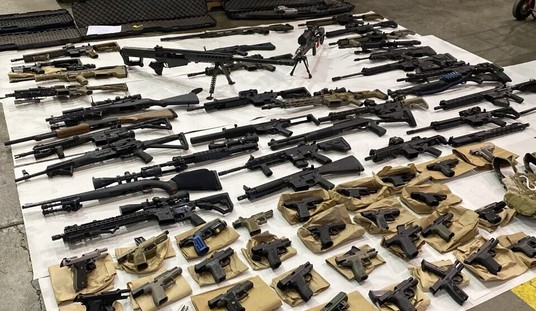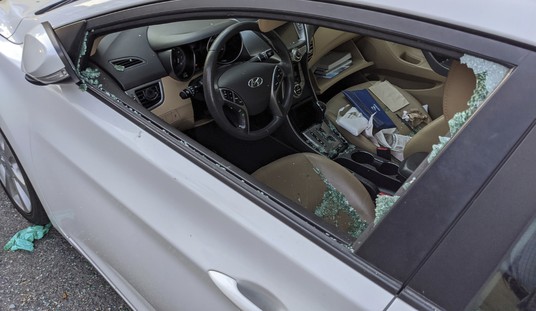Let me be up front. I am going to begin this brief report by admitting that I like Ruger firearms. They make great single-action and double-action revolvers, centerfire pistols, rimfire .22 caliber target pistols, and carbines, such as the Mini-14, Mini-30, and the PC series in 9mm and .40 caliber. The company’s integrity, and emphasis on safety and customer service in the law enforcement and civilian markets, reflect the values of the company’s founder, the late William Ruger.
The name “Ruger” is legendary in the firearms industry for rugged, durable, and reliable, working handguns and long guns for law enforcement professionals and plain folks. Their centerfire, semi-automatic pistols are affordable, accurate, and strong. They are built like trucks, and it could be said that they look like trucks, which in my opinion, is not a bad thing. I like trucks, and I own one. They’re beautiful, but hard to park.
Similarly, it can be said that Ruger semi-autos are hard to conceal. While I partially disagree with this assessment, since with the right holster, most mid-size and full-size handguns can be effectively concealed, there is now a Ruger semi-auto that is designed for concealed carry. It is just as reliable, accurate, and pleasing to shoot as are its larger and heavier predecessors. It is Ruger’s newest centerfire handgun, their sexy, compact, .45 caliber, KP345. While it is streamlined, svelte, and attractive, it definitely is a Ruger. It has a stainless steel slide and barrel/guide rod/camblock assembly, and an “Isoplast” polymer frame with integral grip that fits the hand like a glove.
|
|
I had the pleasure of evaluating this pistol, and I conducted my evaluation at two local indoor ranges I frequent, with the kind assistance of their staff–Pistol People, Inc., in Bensalem, Pennsylvania, and Classic Pistol, Inc., in Southampton, Pennsylvania. Primary testers, beside myself, included Stephen Rementer, Pistol People’s co-director, Paul Benjamin, NRA Certified Staff Instructor at Pistol People, and John Ricco, Classic Pistol’s co-owner.
Mechanical Operation. This handgun is a compact, centerfire, double-action/single-action, magazine-fed, autoloading, recoil-operated pistol that utilizes a Browning U.S. Model 1911 type, tilting barrel design. Unlike the earlier P-Series pistols, the P345 incorporates a “link-less” design in its barrel/slide locking and unlocking system. At the moment of firing, the barrel and slide are locked together. After firing, the barrel and slide recoil rearward a short distance locked together, after which the barrel is cammed downward from its locked position, permitting recoil driven, full rearward movement of the slide and extraction and ejection of the fired cartridge case. Upon return of the slide to its forward position by recoil spring tension, the barrel is cammed back upward into its locked position in the slide. What all this means to the end user is that the pistol cycles reliably. Also, with the addition of a buffer spring on the recoil spring/guide rod/cam block assembly, there’s less recoil than might be expected from a compact .45 pistol that only weighs 29 ounces.
Disassembly and Reassembly. Field stripping for cleaning and routine maintenance is simple and easy. The procedure is identical to that employed with the earlier P-Series pistols. The steps are delineated in the user’s manual. However, a couple of things could be more clearly spelled out. Specifically, when reassembling the pistol, you first must put the barrel back into the slide and push it rearward into its locked position. Then, to reassemble the camblock/recoil spring assembly, you must slide the camblock into the small end of the recoil spring. Then, you re-insert camblock/recoil spring assembly into the slide. The small end of the recoil spring must be facing the rear of the gun as you seat the rear end of the camblock onto the barrel lug.
Safety Features. The gun has a slide-mounted, two-stage, ambidextrous, manual thumb safety/decocker. Its operation is crisp and positive. This manual safety is low profile so it will not snag or rub uncomfortably against your side. In addition to the slide mounted, manual safety, there are several internally engineered safety features requiring no user input. There is an internal firing pin block to prevent accidental discharges should there be a sharp blow on the hammer. There is also a magazine disconnect such that when the magazine is ejected the gun won’t fire. This could come in handy in a gun grab fight.
There is also a loaded chamber indicator (LCI) on top of the slide behind the ejection port. When a round is in the chamber, the forward portion of the indicator protrudes upward from the top of the slide. When the chamber’s empty, the indicator stays flush with the top of the slide. The LCI is one way to verify that the chamber is loaded, although a visual/tactile “press check” is the most fool proof way.
As the Ruger manual judiciously warns, (1) always treat every gun as though it is loaded, (2) always keep the gun’s muzzle pointed in a safe direction, (3) keep your finger off the trigger until you are ready to shoot, and (4) NEVER rely on any mechanical safety device (such as the loaded chamber indicator) to justify violating safety rules 1, 2 and 3.
So How Does This Pistol Perform? The pistol shoots very comfortably. All three of my testers, including myself, liked the feel of the pistol. Recoil was found to be manageable. The double-action trigger is smooth with minimal creep and no over-travel. It broke at around 11 pounds, very much like a Ruger or Smith and Wesson revolver. The single-action trigger broke at around 4½ pounds.
The 8-round capacity, single stack stainless steel magazines dropped freely upon depression of the magazine catch, which did not require a major readjustment of grip to operate. This made performing “emergency”, “speed”. and “tactical” reloads, easy. The fixed, drift-adjustable, dovetailed sights are of the white, three-dot variety, with a rather long and gradual, no snag slope of the rear sight in its dovetail. They are easy to pick up in daylight and ambient light. There are no night sights yet made for this gun.
Shooting Test. I tested the gun with a variety of defensive, hollow point and target, full metal jacket loads. The pistol digested everything it was fed. The pistol ran flawlessly with the exception of a nasty little problem of failing to fully chamber the last round about a third of the time. This was easily corrected however by slapping upward on the base of the magazine, which chambered that last round. Sometimes, the first, or top, round of a full magazine didn’t full chamber. This was corrected in the same fashion. A call to Ruger’s head customer service technician in Prescott, Arizona led to the tentative diagnosis of an overly tight ejector or extractor spring.
Another little problem with my test pistol was that it shot about two to three inches to the left of point of aim. I attempted to correct this by drifting the rear sight to the right in its dovetail with a hammer and brass punch, which was no easy task given how tightly the sight was fitted. This partially corrected the problem.
Basically, at 30 feet (10 yards), I was shooting two inch groups from a two-handed, offhand stance, with a 6-o’clock point of aim. One-handed, off-hand shooting resulted in slightly larger groups at the same distance, but the groups got progressively smaller at defensive distances of 7, 5, and 3 yards.
Laser and Light Shooting. The gun comes equipped with a Picatinny type, accessory light rail at the front of the dust cover. It takes the Insight Technology M-3 accessory light and M-6 accessory tactical laser illuminator (TLI). I attached an M-6, and had a great time! The laser on the gun worked flawlessly and shot within an inch of the point of aim at 30 feet. What a great tool! This is something that I intend to keep mounted on my bedside gun. If “the shit ever hit the fan”, with all that adrenaline pumping and dumping, it could spell SURVIVAL.
All told, I ran about 300 rounds through the gun before thoroughly field stripping and cleaning it, which was a cinch. The gun likes to be well lubricated. Remember, the upper is all metal. I used BreakFree CLP and Militec. After the cleaning, I promptly went back to the range and ran another 200 rounds through the gun, hoping that the problems would go away. They didn’t.
A Second P345R. So, I sent my test pistol back to the factory for diagnosis and repair, and purchased a second P345R at my local gun shop (Tanner’s Sport Center in Jamison, PA) for $400.00. This is very affordable for a quality stainless .45 that should last several life times! The gun comes with two, 8-round magazines, and two “safety keys” to lock the gun’s manual safety in the engaged position and disable the gun. When I got home, I promptly put these keys away in a “safe place”.
With this second gun, I went to the range and ran over 300 rounds of a number of different defensive and target loads through it. This gun digested everything with not a malfunction, and it shot much better than the first. With the exception of shooting about 1½ inches to the left before drifting the rear sight to the right, it was flawless! Group sizes averaged at around 2 inches at 10 yards with offhand, two-handed shooting. One-handed groups at 7 yards averaged around 2½ to 3 inches.
Among the loads I tested were: Federal American Eagle 230 grain FMJ, Speer Lawman 230 grain FMJ, Federal Hydra-Shok 230 grain JHPs, Speer Gold Dot 230 grain JHPs, Remington Golden Saber 230 grain JHPs, Cor-Bon 165 grain and 200 grain +P JHPs, Triton Hi-Vel 230 grain +P JHPs, and MagSafe 96 grain +P “Defender” frangibles. From an accuracy standpoint, it seemed like the gun liked the heavy Federal Hydra-Shoks and Speer Gold Dots the best. These loads, as well as the Speer Lawman FMJs, also seemed to produce the least muzzle blast and recoil.
Concealed Carry. The gun conceals very comfortably. While there are no holsters that are as of yet made specifically for it, after much searching, I obtained several that fit. Galco makes a “COP 3-Slot” belt holster with a thumb break for the Ruger P-series that fits well, and so does High Noon Holsters. It is called the “Sky High”. High Noon also makes their “Hidden Impact”, and “Hidden Ally” tuckable IWBs for the Glock 21, that just happen to fit the Ruger P345R pretty darn well, and Desantis makes their “Tuck-This” IWB for large semi-automatics that fits perfectly. High Noon has stated that they will soon be molding their full line of IWBs and belt slides for this gun. I can’t wait.
I like carrying this gun concealed in an IWB holster. With its flush controls, rounded edges, and sleekness, it conceals well. I’ve worn it comfortably all day in High Noon’s tuckable IWBs, and DeSantis’s “Tuck-This!”, and enjoy wearing it. With a loaded, spare magazine, carrying this gun gives you a feeling of confidence that is hard to describe, unless you yourself work with the gun, and then carry it concealed.
Gun Returned From the Factory. When the gun came back from the factory, about three weeks later (because of the Christmas Holiday), I was eager to see if the problems had been corrected. They had replaced the extractor, ejector, barrel, recoil spring, blocker lever, and sear. A technician at the factory told me that there had been a burr on the end of the original ejector and that the rifling in the bore of the original barrel had been uneven on one side near the muzzle. Before the gun was sent back to me, they did a thorough function and safety check.
Well, everything they did paid off. My original gun shot terrific. I shot an IDPA match with it. I won’t tell you my score, but I will say that the gun did its job. All problems had been corrected. There were no more misfeeds or extraction/ejection problems, and the gun shot true to point of aim.
Summary and Recommendations. I like this Ruger P345R a lot. I have made this gun (the second one I bought) one of my bedside guns, equipped with an Insight Technology M-6 Tactical Laser Illuminator. I have also taken to carrying the gun (without the M-6) in a High Noon IWB.
If you are a Ruger fan, like I am, you will like this gun a lot too. If you are new to Rugers, and buy this gun, I predict you will be pleased. You also just might find yourself exploring their other offerings after purchasing and enjoying this pistol.
In summary, you can’t go wrong with this gun. It’s a Ruger. The engineers and gunsmiths at Sturm, Ruger, once again, have done everything right, and then some. With its long but smooth double action trigger, and consistent, positive, single-action trigger, the P345 fulfills a niche for the safety conscious, legally armed citizen, as well as for agencies concerned about liability issues. As time goes by, the Ruger P345 should find itself just as at home, and just as revered, as a bedroom gun, ranch gun, duty sidearm, and concealed carry gun. It is a very affordable, viable alternative to the Browning style, US 1911 Government Model, single-action .45’s, and Glock’s double-action .45s.
Want more Concealed Carry information. Free newsletter from the United States Concealed Carry Association. Click here.









Join the conversation as a VIP Member